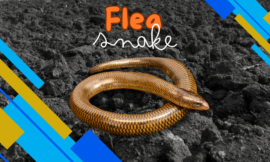If you’ve ever spotted a red spider in your home or garden, you might have wondered whether it’s dangerous, what species it belongs to, or how to get rid of it. Red spiders are not a single species, but rather a group of spiders and mites that share a reddish color. These arachnids are fascinating creatures with unique behaviors and characteristics. In this article, we’ll explore 5 surprising facts about red spiders, their habitat, whether they are dangerous, and how to manage or prevent them.
What Is a Red Spider? A Complete Guide to Identification
Red spiders are not always what they seem. The term “red spider” can refer to a variety of arachnid species, including red house spiders and red spider mites. While they may share the same distinctive color, these spiders vary greatly in terms of size, behavior, and potential threat to humans or plants.
- Red House Spider:
One of the most common types of red spiders is the red house spider (Nesticodes rufipes), typically found in homes and buildings. These spiders are small, with bright red bodies and legs. They prefer dark corners, window sills, and cracks in walls, making them a frequent sight in households. - Red Spider Mites:
Red spider mites, on the other hand, are not spiders at all. They are tiny plant-feeding mites that infest crops and houseplants. Known for their vibrant red color, they often create webbing similar to spiders, making them hard to distinguish from actual spiders. - Garden Spiders:
Some species of orb-weaver spiders also exhibit reddish hues. These spiders build intricate webs and are commonly found in gardens. Although their red coloration may seem alarming, they are generally harmless to humans.
Understanding how to identify red spiders is essential for determining whether they pose any threat or require removal.
Common Red Spider Species: From Red Spider Mites to Red House Spiders
Red spiders encompass various species, but a few stand out due to their prevalence and unique characteristics. Let’s take a closer look at the most common red spider species and what sets them apart:
- Red House Spider (Nesticodes rufipes):
The red house spider is a small, harmless spider often confused with more dangerous species. These spiders are usually no larger than a quarter of an inch and are known for their bright red coloration. They are commonly found indoors in cracks and crevices, feeding on insects and pests. - Red Spider Mites (Tetranychus urticae):
Unlike true spiders, red spider mites are tiny arachnids that primarily feed on plants. They are considered pests in gardens and greenhouses because they can quickly infest and damage crops. Although harmless to humans, their presence can be destructive to plant life. - Marbled Orb-Weaver (Araneus marmoreus):
Although not always red, the marbled orb-weaver can sometimes display red or orange coloring. These garden spiders are known for creating large, spiral-shaped webs and are generally harmless to humans, as they rarely bite unless threatened.
By familiarizing yourself with these species, you can better understand which red spiders are beneficial and which ones need to be managed, especially when dealing with plant infestations from red spider mites.
Are Red Spiders Dangerous? What You Should Know
One of the most common questions about red spiders is whether they are dangerous. The answer largely depends on the species, but most red spiders are harmless to humans.
- Red House Spiders:
While the red house spider may look alarming due to its color, it poses no significant threat to humans. Their bites are rare and generally cause only mild irritation, similar to a mosquito bite. These spiders are considered more of a nuisance than a danger. - Red Spider Mites:
Red spider mites are not harmful to humans. However, they can cause significant damage to plants, leading to leaf discoloration, wilting, and eventually plant death if left untreated. Their danger lies in their ability to rapidly reproduce and spread, making them a serious pest for gardeners. - Bites and Venom:
While some red spiders, such as the red widow spider, possess venom, they are not commonly found in most areas. Red widow spider bites are rare and typically only occur when the spider feels threatened. In such cases, medical attention may be required, but bites from these spiders are not usually fatal.
Overall, most red spiders are not dangerous, and they rarely pose a significant threat to humans or pets.
Red Spider Bites: Symptoms, Treatment, and Prevention
Although most red spider bites are harmless, it’s important to recognize the symptoms and know how to treat them. Here’s what you should know about red spider bites:
- Symptoms:
The symptoms of a red spider bite vary depending on the species. For harmless species like the red house spider, you may experience mild redness, itching, or swelling around the bite area. In rare cases, sensitive individuals may experience a more severe reaction, such as increased swelling or allergic responses. - Treatment:
Most red spider bites can be treated at home. Wash the bite area with soap and water, and apply an anti-itch cream or hydrocortisone cream to reduce itching and swelling. Ice packs can help alleviate swelling, and over-the-counter pain relievers may also be used for discomfort. - Prevention:
To prevent red spider bites, avoid handling spiders or disturbing their webs. Keep your home free of clutter, and seal cracks and crevices where spiders may hide. In gardens, control spider mite infestations by regularly inspecting plants and using organic pest control methods, such as neem oil or insecticidal soap.
Knowing how to identify and manage red spider bites ensures you can react calmly and appropriately should an encounter occur.
Where Do Red Spiders Live? Exploring Their Habitat and Behavior
Red spiders can be found in various habitats, depending on the species. Here’s where you’re most likely to encounter them:
- Indoors:
Red house spiders are commonly found inside homes, especially in dark, undisturbed areas like attics, basements, and garages. They create small webs in corners, cracks, and window sills, waiting for insects to become trapped. - Gardens and Greenhouses:
Red spider mites are often found in gardens, greenhouses, and on indoor houseplants. These mites thrive in warm, dry environments and feed on the sap of plants, leading to yellowing leaves and eventual plant death if left unchecked. - Natural Outdoor Habitats:
Some red spider species, such as the marbled orb-weaver, prefer to live in natural outdoor environments, such as forests, gardens, and fields. These spiders build large webs to capture flying insects, and they are typically more active during the warmer months.
By understanding the habitat and behavior of red spiders, you can take preventive measures to control their presence in your home or garden.
How to Get Rid of Red Spiders: Simple Tips for Prevention
If you’re dealing with a red spider infestation, either indoors or in your garden, taking the right preventive steps can help you manage and eliminate these pests. Here’s how to get rid of red spiders and prevent future infestations:
- Keep Your Home Clean and Clutter-Free:
Regularly vacuum and dust your home to remove webs, spiders, and other pests. Pay attention to corners, window sills, and storage areas, where spiders tend to hide. - Seal Entry Points:
Seal cracks, gaps, and holes in windows, doors, and walls to prevent red spiders from entering your home. Spiders often use these entry points to seek shelter and food. - Use Natural Repellents:
Essential oils like peppermint, tea tree, and eucalyptus have been shown to repel spiders. Mix a few drops of oil with water and spray it around windows, doorways, and other areas where spiders are likely to enter. - Manage Garden Pests:
In the garden, regularly inspect plants for signs of red spider mites. Use natural pest control methods such as neem oil or predatory insects like ladybugs to control mite populations without harming your plants.
By following these preventive measures, you can get rid of red spiders and reduce the chances of future infestations in your home and garden.
Red Spider Mites vs Red House Spiders: What’s the Difference?
Although both red spider mites and red house spiders share the same name, they are vastly different creatures. Here’s how to tell them apart:
- Size:
Red spider mites are much smaller than red house spiders, often microscopic in size. They are most easily seen when large populations create webbing on plants. Red house spiders are larger, with an average body size of a few millimeters. - Habitat:
Red spider mites are primarily plant pests, feeding on the sap of leaves, while red house spiders prefer to live in dark, sheltered indoor spaces where they can catch insects. - Behavior:
Red spider mites are harmful to plants but harmless to humans, while red house spiders can occasionally bite but rarely pose any serious threat to humans.
Understanding these differences can help you determine the best approach to managing each type of red spider.
For more exciting blogs, visit our homepage Magzineco.
Conclusion: Understanding Red Spiders and How to Deal with Them
In conclusion, red spiders may seem alarming due to their bright color, but most species are harmless to humans. From the small and common red house spider to the plant-damaging red spider mite, these creatures are a part of our natural environment. By understanding how to identify, manage, and prevent red spiders, you can keep your home and garden pest-free while appreciating the role these arachnids play in nature. Whether you’re dealing with an indoor infestation or plant-destroying mites, knowing the right steps to take will ensure that red spiders don’t cause unnecessary problems.
FAQs About Red Spiders
- What is a red spider?
A red spider refers to several types of spiders or mites that are red in color, including the red house spider and red spider mite. - Are red spiders dangerous?
Most red spiders, like the red house spider, are harmless to humans. Some species may bite, but their venom is generally not dangerous. - How do I identify a red spider?
You can identify a red spider by its bright red body, size, and habitat. Red house spiders are larger and found indoors, while red spider mites are tiny and live on plants. - Where do red spiders live?
Red spiders can live indoors in dark corners, or outdoors in gardens. Red spider mites are commonly found on plants and in greenhouses. - What should I do if I’m bitten by a red spider?
Clean the bite with soap and water, apply an anti-itch cream, and use ice to reduce swelling. Seek medical attention if symptoms worsen. - How can I get rid of red spider mites in my garden?
To remove red spider mites, use natural remedies like neem oil or predatory insects, or apply insecticidal soap to infested plants. - Do red spiders spin webs?
Yes, red house spiders create small webs to catch prey, while red spider mites also produce webbing, especially in large infestations. - Can red spiders damage plants?
Red spider mites can cause serious damage to plants by feeding on their sap, leading to discoloration, wilting, and death. - Are red spider mites harmful to humans?
No, red spider mites do not bite or harm humans but can significantly damage plant life. - How do I prevent red spiders from entering my home?
Keep your home clean, seal cracks and entry points, and use natural spider repellents like essential oils to prevent red spiders from entering.




